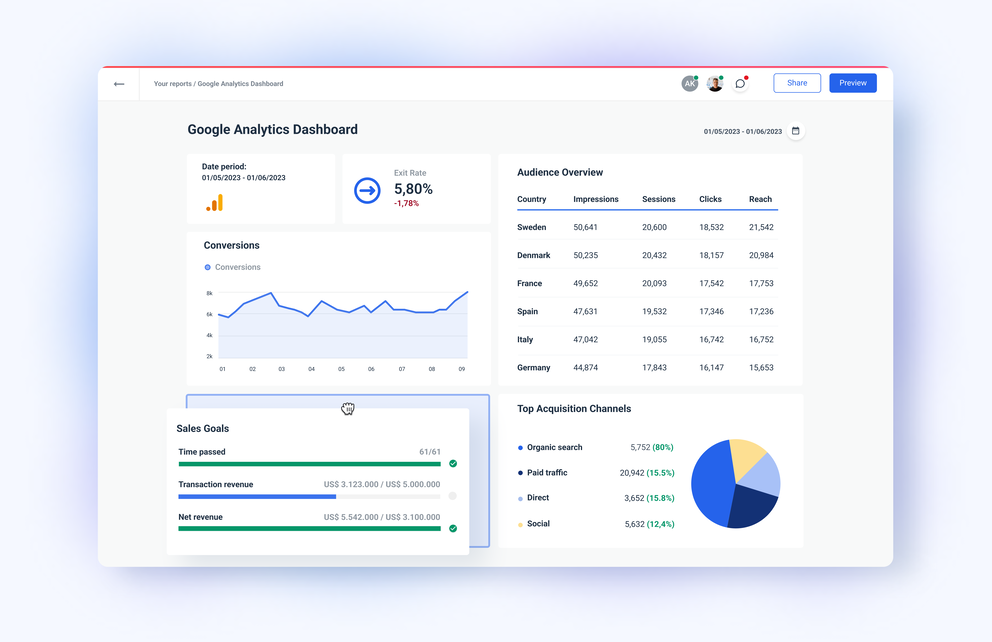Specialist Tips on When Does the Google Analytics Tracking Code Send an Event Hit to Analytics for Enhanced Data Accuracy
Specialist Tips on When Does the Google Analytics Tracking Code Send an Event Hit to Analytics for Enhanced Data Accuracy
Blog Article
Enhance Your SEO Approach With Effective Google Analytics Tracking Code
Integrating Google Analytics tracking code right into your Search engine optimization strategy is a critical action toward accomplishing quantifiable outcomes. What details approaches can you embrace to maximize the impact of this data on your SEO efforts?

Recognizing Google Analytics Fundamentals
To efficiently leverage Google Analytics for Search Engine Optimization, it is vital to grasp its foundational concepts. Google Analytics acts as a powerful device for tracking and assessing web site traffic, giving insights that are critical for maximizing online search engine efficiency. At its core, the platform allows customers to check individual actions, traffic resources, and key efficiency indications (KPIs) such as bounce rates and session periods.
Familiarity with the individual interface is essential. The Audience section provides group understandings, aiding to tailor material to target individuals effectively.
Comprehending metrics such as natural traffic quantities and conversion rates is vital for evaluating SEO efficiency. Ultimately, understanding these essentials enables digital marketing experts to harness the full capacity of Google Analytics, driving educated decisions that boost overall SEO strategies. By developing a strong structure, businesses can effectively analyze their efficiency and recognize possibilities for enhancement in their on the internet existence.
Setting Up Tracking Code
Properly establishing up the monitoring code is critical for precise data collection in Google Analytics. The primary step entails developing a Google Analytics account and property, where you will certainly receive a distinct tracking ID. This ID is crucial for connecting your site's data to your Google Analytics account.
As soon as you have your tracking ID, integrate the monitoring code fragment into your site's HTML. This is typically positioned in the header section of each web page to guarantee it loads early in the web page providing process. If you're making use of a Material Monitoring System (CMS) like WordPress, several plugins streamline this procedure, enabling you to include the monitoring code without direct HTML modifying.
After executing the tracking code, it is crucial to evaluate its functionality. If the monitoring code is correctly installed and functioning, you can make use of the Google Tag Aide tool to confirm. Additionally, keep an eye on the real-time coverage function in Google Analytics to validate that data is being accumulated correctly.
Making certain that the tracking code is appropriately set up lays the foundation for reliable data analysis, allowing you to make informed decisions to boost your search engine optimization technique and total website performance.
Secret Metrics to Display
Recognizing key metrics to keep track of is crucial for comprehending the efficiency of your search engine optimization strategy via Google Analytics. By concentrating on particular data factors, you can determine the impact of your optimization efforts and make notified choices to enhance performance.
One of the main metrics to track is natural website traffic, which shows the number of site visitors coming to your website via search engines. This metric reflects the general health of your SEO technique. Next, keep an eye on the bounce price, which reveals the portion of site visitors that leave your website after watching just one web page. A high bounce price might signify that your web content is not meeting user expectations or that your touchdown web pages require renovation.
Keyword positions are also important; monitoring changes in keyword settings helps examine the effectiveness of your targeted Search engine optimization efforts. By very closely complying with these key metrics, you can obtain important understandings into your Search engine optimization strategy's investigate this site performance and identify areas for renovation.
Analyzing Individual Behavior
Comprehending customer habits is vital for fine-tuning your Search engine optimization strategy and maximizing site performance. Google Analytics gives a wide range of information on individual engagement metrics, such as bounce rates, time on site, and web page sights per session.
Additionally, tracking user flow can disclose usual navigation courses, highlighting prospective bottlenecks or locations for improvement. Understanding the demographics, rate of interests, and geographic places of your site visitors enables even more customized web content that talks with their requirements. click here to find out more Using segmentation functions in Google Analytics additionally boosts your capacity to assess customer habits by enabling you to compare different target market groups.
Additionally, checking conversion rates and user activities can give insights right into the performance of your telephone calls to activity and overall site layout. This alternative view of user behavior is important for making informed choices that improve user experience and drive greater involvement, inevitably adding to improved search engine optimization efficiency.
Leveraging Insights for SEO
Continually leveraging insights gotten from user actions evaluation can considerably boost your search engine optimization efforts. By making use of Google Analytics, you can identify essential metrics such as bounce rates, session duration, and customer flow, which disclose how site visitors engage with your content. These understandings enable you to determine areas requiring improvement, such as high departure web pages or underperforming keywords.

In addition, tracking natural web traffic resources provides clearness on which networks are most efficient, allowing you to designate sources strategically (when does the google analytics tracking code send an event hit to analytics?). By examining conversion rates together with traffic information, you can determine which pages drive real service outcomes, refining your SEO strategy better
Including these insights into your web content strategy not only enhances presence however also cultivates a much more user-centric method. Inevitably, a data-driven SEO approach educated by analytics not only boosts positions but additionally aligns your purposes with customer assumptions, resulting in continual growth and engagement.
Final Thought
Effective execution of Google Analytics tracking code considerably boosts a SEO technique by giving essential understandings right into user actions and traffic sources. Monitoring crucial metrics such as natural traffic, bounce rates, and conversion rates promotes the identification of enhancement areas. Furthermore, analyzing user demographics and interaction metrics permits a more targeted material approach. Ultimately, leveraging these insights adds to improving search engine optimization initiatives, driving even more appropriate web traffic, and enhancing overall internet site efficiency.
Including Google Analytics tracking code right into your Search engine optimization technique is an essential step toward achieving measurable outcomes. At its core, the system allows individuals to keep an eye on individual habits, traffic sources, and vital efficiency signs (KPIs) such as bounce rates and session periods.
Recognizing customer habits is important for see post refining your Search engine optimization approach and maximizing website performance.Consistently leveraging understandings obtained from individual behavior evaluation can substantially boost your SEO initiatives.Efficient execution of Google Analytics tracking code dramatically improves a Search engine optimization method by offering crucial understandings into customer habits and web traffic resources.
Report this page